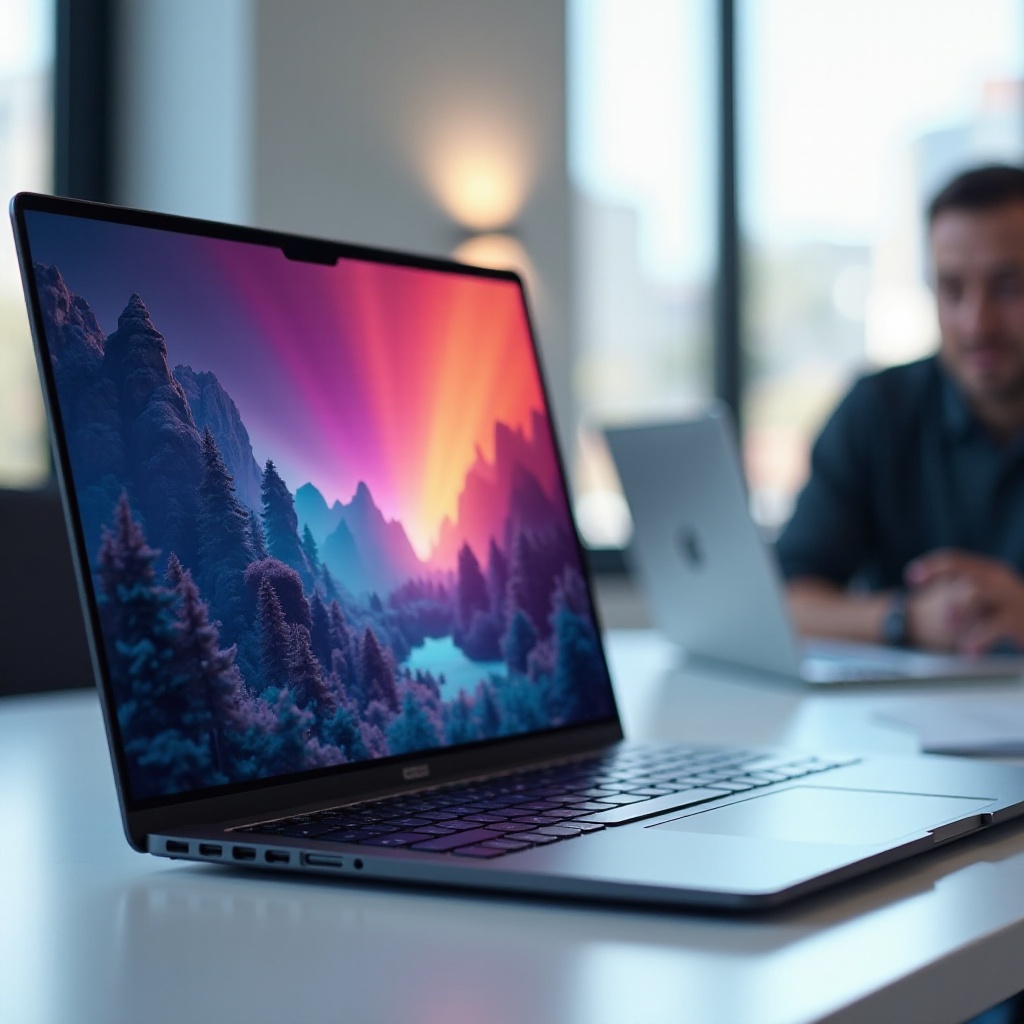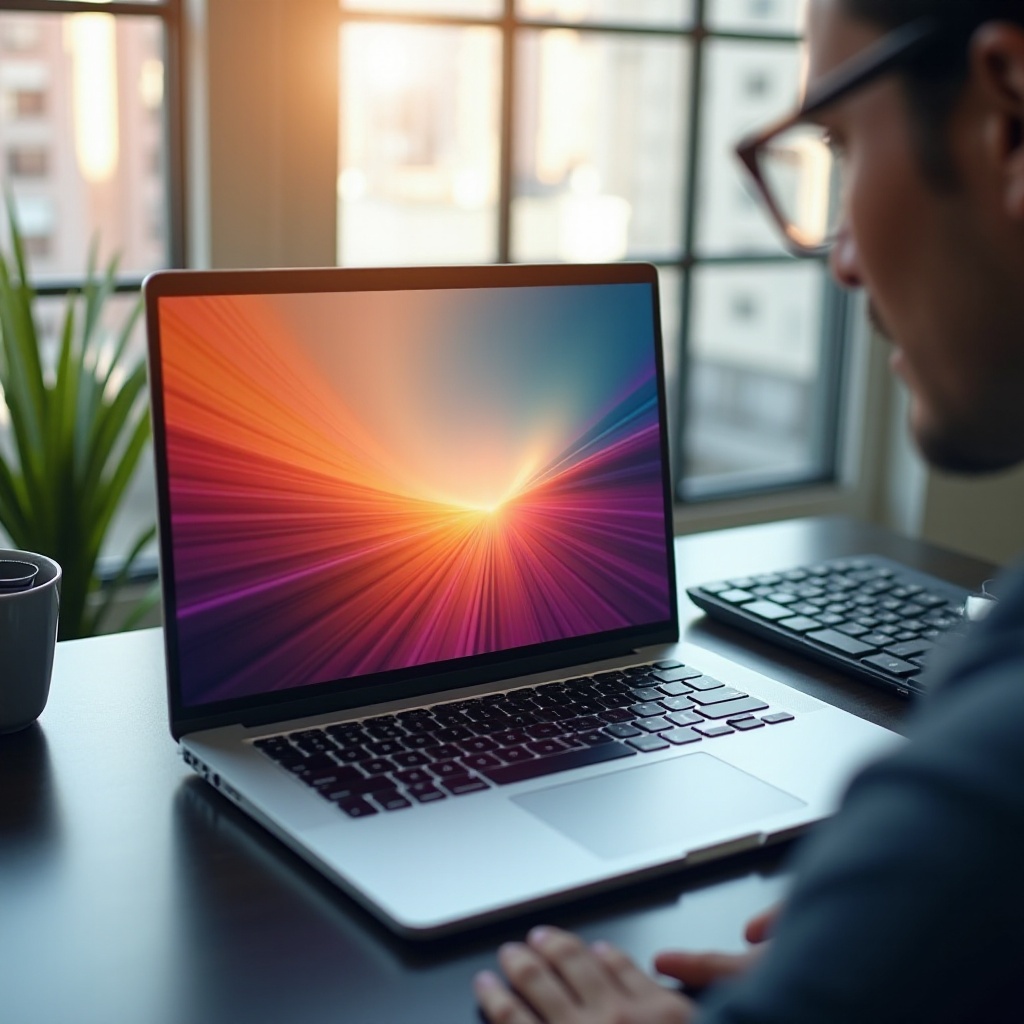Introduction
A fully optimized laptop screen can significantly enhance your user experience, whether for work, gaming, or entertainment. TFT (Thin Film Transistor) screens are known for their superior image quality and responsiveness. Knowing how to enable and maximize your TFT full screen can make a big difference in how you interact with your laptop. In this guide, we'll walk you through understanding TFT screens, checking compatibility, enabling full-screen mode, optimizing settings, troubleshooting common issues, and finally, maintaining your screen for longevity.

Understanding TFT Screens
Before diving into the full-screen setup, it's crucial to understand what a TFT screen is and its distinct advantages.
What is a TFT Screen?
A TFT, or Thin Film Transistor, screen offers high contrast and quick response times, making it an ideal choice for laptops. This technology uses an active matrix to control each pixel, resulting in sharper images and better color accuracy.
Types of Laptop Screens: TFT vs. Others
When comparing TFT screens to other types like LCD (Liquid Crystal Display) or OLED (Organic Light Emitting Diodes), TFT screens often provide a better balance of performance and cost. While LED and OLED screens might offer better contrast or thinner profiles, TFT screens excel in speed and are generally more budget-friendly.
Benefits of TFT Screens
The main advantages of TFT screens are:- High resolution and sharp image quality.- Fast refresh rates, making them suitable for gaming.- Cost-effective compared to other screen technologies.
Understanding these basics sets the stage for enabling full-screen mode on your laptop.
Checking Compatibility with Full-Screen Mode
Before you get started, it’s essential to ensure your laptop supports TFT full-screen mode.
How to Determine Compatibility
Compatibility hinges on a few factors:- Laptop Model: Check if your laptop model supports full-screen settings for TFT.- Graphics Card: Ensure your graphics card is capable of handling full-screen modes. Visit the manufacturer's website and look for your card's specifications.
System Requirements and Technical Specifications
To achieve full-screen mode, your laptop needs:- Sufficient RAM: At least 4GB, but 8GB or higher is preferable for smooth performance.- Updated Graphics Drivers: Make sure your drivers are up-to-date.- Screen Resolution: Your display should support the native resolution that matches the screen's full capacity.
Confirming these aspects ensures you can proceed without hardware limitations.
Enabling Full-Screen Mode
Once compatibility is established, the next step is enabling full-screen mode. This section provides step-by-step guides for various operating systems.
Step-by-Step Guide for Windows
- Right-click on the desktop and select 'Display Settings'.
- Scroll down to 'Scale and Layout'.
- Choose the recommended resolution for your TFT display.
- Enable full-screen mode in each specific application (e.g., games, video players).
Step-by-Step Guide for macOS
- Open 'System Preferences' and select 'Displays'.
- Click on the 'Display' tab, select the 'Scaled' option to adjust resolution.
- Choose a resolution that matches your screen’s aspect ratio.
- Use full-screen apps' own settings to enable full-screen usage.
Step-by-Step Guide for Linux
- Open the 'Settings' application and go to 'Displays'.
- Select the resolution recommended for your TFT display.
- Adjust any other display settings needed.
- Enable full-screen mode within individual applications.
Following these steps, you should now have your TFT laptop screen in full-screen mode.

Optimizing Your Full-Screen Experience
With full-screen mode enabled, it’s time to fine-tune the settings for optimal performance and viewing comfort.
Calibrating Screen Resolution and Brightness
- Resolution: Always use the native resolution for your TFT screen.
- Brightness: Adjust the brightness settings from the control panel to reduce eye strain and improve visual quality.
Adjusting Contrast and Color Settings
- Use tools like 'Calibrite' or your system’s default color calibration tool.
- Adjust the contrast to enhance photo and video viewing or gaming experiences.
Improving Refresh Rates
A higher refresh rate provides smoother motion which is ideal for gaming or video playback.1. Go to your display settings and look for the 'Refresh Rate' option.2. Select the highest refresh rate your display supports.
Optimizing these settings ensures you get the most out of your full-screen experience.

Troubleshooting Common Issues
If problems arise, don’t worry. Many issues that affect TFT full-screen modes have straightforward solutions.
Common Problems and Solutions
- Black Bars: This usually happens due to incorrect aspect ratios. Adjust resolution settings to fit your screen.
- Blurred Images: Check your screen resolution and ensure it matches the native resolution.
- Flickering: Update your graphics drivers and check the refresh rate settings.
Updating Drivers and Software
Regular updates can fix many display issues.1. Windows: Use Windows Update or the manufacturer’s website to get the latest drivers.2. macOS: System updates generally include the latest drivers.3. Linux: Use your distribution’s package manager to update drivers.
When to Seek Professional Help
If you encounter persistent issues that these steps don’t solve, consider contacting a professional technician. They can diagnose and fix deeper hardware problems.
Conclusion
Setting up and maximizing your laptop's TFT full-screen display significantly enhances your user experience. By understanding the importance of TFT screens, checking compatibility, enabling full-screen mode, optimizing settings, and troubleshooting common issues, you can fully utilize your laptop's display capabilities. Remember to keep your system updated and practice regular maintenance to prolong your screen’s lifespan.
Frequently Asked Questions
How do I know if my laptop supports TFT full screen?
Check your laptop's specifications sheet or the manufacturer's website to determine if it supports TFT full-screen mode. Look for details about screen type and maximum resolution.
Why is my screen not adjusting to full screen even after following the steps?
Ensure your graphics drivers are up-to-date and your laptop meets the necessary system requirements. Also, verify that the application you are using supports full-screen mode.
What should I do if my screen resolution options are limited?
Limited resolution options may indicate outdated graphics drivers. Update your drivers to see if more resolution settings become available. If not, consult your laptop’s manufacturer for further assistance.
